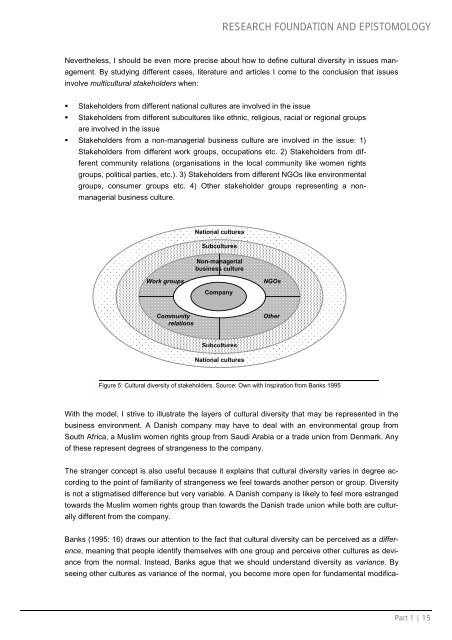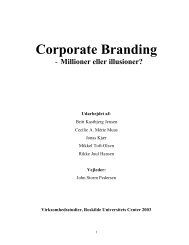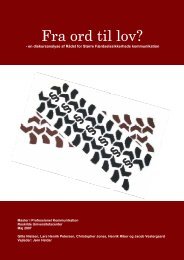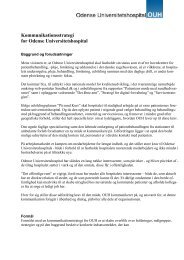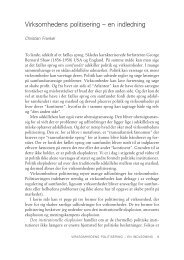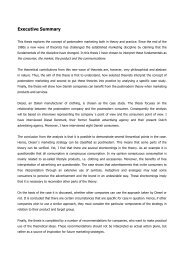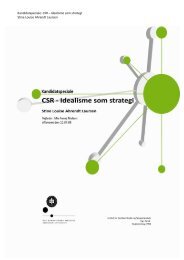March 2003 - Kommunikationsforum
March 2003 - Kommunikationsforum
March 2003 - Kommunikationsforum
- No tags were found...
Create successful ePaper yourself
Turn your PDF publications into a flip-book with our unique Google optimized e-Paper software.
RESEARCH FOUNDATION AND EPISTOMOLOGYNevertheless, I should be even more precise about how to define cultural diversity in issues management.By studying different cases, literature and articles I come to the conclusion that issuesinvolve multicultural stakeholders when:! Stakeholders from different national cultures are involved in the issue! Stakeholders from different subcultures like ethnic, religious, racial or regional groupsare involved in the issue! Stakeholders from a non-managerial business culture are involved in the issue: 1)Stakeholders from different work groups, occupations etc. 2) Stakeholders from differentcommunity relations (organisations in the local community like women rightsgroups, political parties, etc.). 3) Stakeholders from different NGOs like environmentalgroups, consumer groups etc. 4) Other stakeholder groups representing a nonmanagerialbusiness culture.National culturesSubculturesNon-managerialbusiness cultureWork groupsCompanyNGOsCommunityrelationsOtherSubculturesNational culturesFigure 5: Cultural diversity of stakeholders. Source: Own with Inspiration from Banks 1995With the model, I strive to illustrate the layers of cultural diversity that may be represented in thebusiness environment. A Danish company may have to deal with an environmental group fromSouth Africa, a Muslim women rights group from Saudi Arabia or a trade union from Denmark. Anyof these represent degrees of strangeness to the company.The stranger concept is also useful because it explains that cultural diversity varies in degree accordingto the point of familiarity of strangeness we feel towards another person or group. Diversityis not a stigmatised difference but very variable. A Danish company is likely to feel more estrangedtowards the Muslim women rights group than towards the Danish trade union while both are culturallydifferent from the company.Banks (1995: 16) draws our attention to the fact that cultural diversity can be perceived as a difference,meaning that people identify themselves with one group and perceive other cultures as deviancefrom the normal. Instead, Banks ague that we should understand diversity as variance. Byseeing other cultures as variance of the normal, you become more open for fundamental modifica-Part 1 | 15


